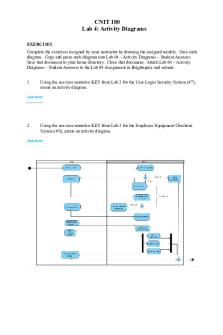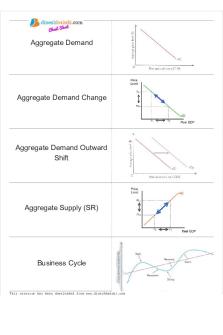Lab 10 - HR Diagrams PDF

| Title | Lab 10 - HR Diagrams |
|---|---|
| Author | Joshua Murtha |
| Course | Political Science |
| Institution | Chamberlain University |
| Pages | 3 |
| File Size | 137.5 KB |
| File Type | |
| Total Downloads | 4 |
| Total Views | 147 |
Summary
Acquint...
Description
HR Diagrams Background Information Before you begin, read through this background information related to the lab. Then complete the following: 1. The table below summarizes the relationship between spectral type, temperature, and color for stars. Use the background readings and associated animations to complete the empty portions of the table. (If you are running stuck, use this teacher video for help.)
Star
Surface Temp(K)
Spectral Type
Color
Betelguese
3,530
M2
Orange
Arcturus
4,300
K5
Yellow
The Sun
5,830
G2
Yellow
Procyon A
6,530
F5
Yellow-White
Sirius A
9,145
A1
White
Rigel A
11,000
B9
White-Blue
Delta Orionis
33,200
O9
Blue
2. Complete the following table related to stellar luminosities in solar units using the equation L = R2∙T4. If you are having trouble using this equation, then watch the video Stellar Luminosity Table, where I walk through the calculations. Radius (R⊙)
Temperature (T⊙)
Luminosity (L⊙)
1
1
1
1
2
16.8
3.02
1
9
1
1/2
.057
NAAP – HR Diagram Explorer 1/3
3. The mass luminosity relation describes the mathematical relationship between luminosity and mass for main sequence stars. It describes how a star with a mass of 2 M⊙ would have a luminosity of [ 11.31 ] L⊙ while a star with luminosity of 3,160 L⊙ would have an approximate mass of [ 10 ] M⊙. (Are you lost on this question - no clue how to do it? Check out this brief video tutorial.) HR Diagram Explorer Open the HR Diagram Explorer. Begin by familiarizing yourself with the capabilities of the Hertzsprung-Russell Diagram Explorer through experimentation. (Running stuck on this section? Watch this teacher video for help.) ● An actual HR Diagram is provided in the upper right panel with an active location indicated by a red x. This active location can be dragged around the diagram. The options panel allows you to control the variables plotted on the x-axis: (temperature, BV, or spectral type) and those plotted on the y-axis (luminosity or absolute magnitude). One can also show the main sequence, luminosity classes, isoradius lines, or the instability strip. The Plotted Stars panel allows you to add various groups of stars to the diagram. ● The Cursor Properties panel has sliders for the temperature and luminosity of the active location on the HR Diagram. These can control the values of the active location or move in response to the active location being dragged. The temperature and luminosity (in solar units) are used to solve for the radius of a star at the active location. ● The Size Comparison panel in the upper left illustrates the star corresponding to the active location on the HR Diagram. Note that the size of the sun remains constant. Exercises ● Drag the active location around on the HR Diagram. Note the resulting changes in the temperature and luminosity sliders. Now manipulate the temperature and luminosity sliders and note the corresponding change in the active location. 4. Check (with an “X”) the appropriate region of the HR diagram corresponding to each description below. Description
Top
Right
Bottom
Hot stars are found at the:
x
Faint stars are found at the: Luminous stars are found at the: Cool stars are found at the:
Lef
x x x
● Drag the active location around on the HR Diagram once again. This time focus on the Size Comparison panel. 5. Check (with an “X”) the appropriate region of the HR diagram corresponding to each description below.
Description
Upper Lef
Large Blue stars are found at the:
x
Small Red stars are found at the: Small Blue stars would be found at the: Really Large Red stars are found at the:
Upper Right
Lower Right
Lower Lef
x x x
● Check show isoradius lines. Note that at each point on a green line, stars have the same value of radius. Use these isoradius lines to check your answers in the table above. ● In addition to the isoradius lines, check show luminosity classes. This green region (dwarfs V) is known as the main sequence and contains all stars that are fusing hydrogen into helium as their primary energy source. Over 90% of all stars fall in this region on the HR diagram. Move the active cursor up and down the main sequence and explore the different values of stellar radius. 6. Describe the range of sizes of stars along the main sequence. What are stars like near the top of the main sequence, the middle, and the bottom? At the top and left of it in the main sequence stars are going to be bigger and hotter. As it, the star, starts going down towards the lower right hand side it becomes colder and smaller.
Completing the Lab ● Submit your completed lab document using your instructor’s online dropbox. ● Return to the course and complete the lab quiz to demonstrate your understanding....
Similar Free PDFs

Lab 10 - HR Diagrams
- 3 Pages

Lab 10 - Free Body Diagrams
- 7 Pages

HR Diagram Lab
- 9 Pages

Lab Practical 2 Diagrams
- 17 Pages

Lab 10 - Lab 10
- 17 Pages

Lab 10 - Lab 10 Report
- 7 Pages

GEOG Lab 10 - lab 10
- 4 Pages

HR Acronyms - HR Terms
- 4 Pages

HR lecture 9 - HR basics
- 6 Pages

Lab 10 - PH111 LAB
- 2 Pages

Lab 10
- 14 Pages

Lab # 10
- 4 Pages
Popular Institutions
- Tinajero National High School - Annex
- Politeknik Caltex Riau
- Yokohama City University
- SGT University
- University of Al-Qadisiyah
- Divine Word College of Vigan
- Techniek College Rotterdam
- Universidade de Santiago
- Universiti Teknologi MARA Cawangan Johor Kampus Pasir Gudang
- Poltekkes Kemenkes Yogyakarta
- Baguio City National High School
- Colegio san marcos
- preparatoria uno
- Centro de Bachillerato Tecnológico Industrial y de Servicios No. 107
- Dalian Maritime University
- Quang Trung Secondary School
- Colegio Tecnológico en Informática
- Corporación Regional de Educación Superior
- Grupo CEDVA
- Dar Al Uloom University
- Centro de Estudios Preuniversitarios de la Universidad Nacional de Ingeniería
- 上智大学
- Aakash International School, Nuna Majara
- San Felipe Neri Catholic School
- Kang Chiao International School - New Taipei City
- Misamis Occidental National High School
- Institución Educativa Escuela Normal Juan Ladrilleros
- Kolehiyo ng Pantukan
- Batanes State College
- Instituto Continental
- Sekolah Menengah Kejuruan Kesehatan Kaltara (Tarakan)
- Colegio de La Inmaculada Concepcion - Cebu



